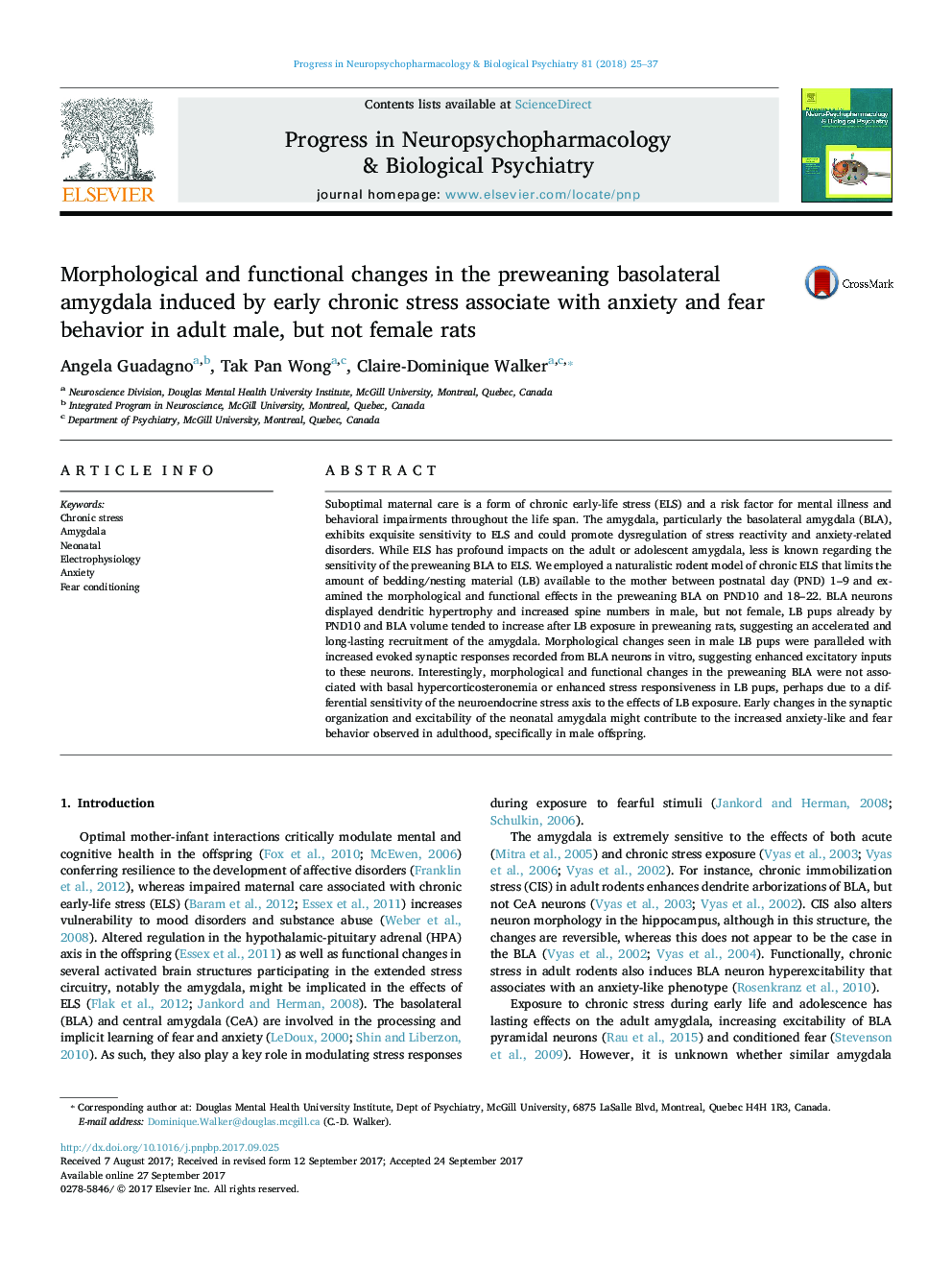| کد مقاله | کد نشریه | سال انتشار | مقاله انگلیسی | نسخه تمام متن |
|---|---|---|---|---|
| 5557883 | 1561013 | 2018 | 13 صفحه PDF | دانلود رایگان |
- Limited bedding (LB) induces sex-dependent morphological and functional changes in the young basolateral amygdala (BLA).
- Increased BLA spine density and evoked synaptic responses in LB male pups persist beyond stress exposure.
- Increased anxiety and fear behaviors and reduced social interactions are observed in adult LB males, but not females.
Suboptimal maternal care is a form of chronic early-life stress (ELS) and a risk factor for mental illness and behavioral impairments throughout the life span. The amygdala, particularly the basolateral amygdala (BLA), exhibits exquisite sensitivity to ELS and could promote dysregulation of stress reactivity and anxiety-related disorders. While ELS has profound impacts on the adult or adolescent amygdala, less is known regarding the sensitivity of the preweaning BLA to ELS. We employed a naturalistic rodent model of chronic ELS that limits the amount of bedding/nesting material (LB) available to the mother between postnatal day (PND) 1-9 and examined the morphological and functional effects in the preweaning BLA on PND10 and 18-22. BLA neurons displayed dendritic hypertrophy and increased spine numbers in male, but not female, LB pups already by PND10 and BLA volume tended to increase after LB exposure in preweaning rats, suggesting an accelerated and long-lasting recruitment of the amygdala. Morphological changes seen in male LB pups were paralleled with increased evoked synaptic responses recorded from BLA neurons in vitro, suggesting enhanced excitatory inputs to these neurons. Interestingly, morphological and functional changes in the preweaning BLA were not associated with basal hypercorticosteronemia or enhanced stress responsiveness in LB pups, perhaps due to a differential sensitivity of the neuroendocrine stress axis to the effects of LB exposure. Early changes in the synaptic organization and excitability of the neonatal amygdala might contribute to the increased anxiety-like and fear behavior observed in adulthood, specifically in male offspring.
Journal: Progress in Neuro-Psychopharmacology and Biological Psychiatry - Volume 81, 2 February 2018, Pages 25-37
